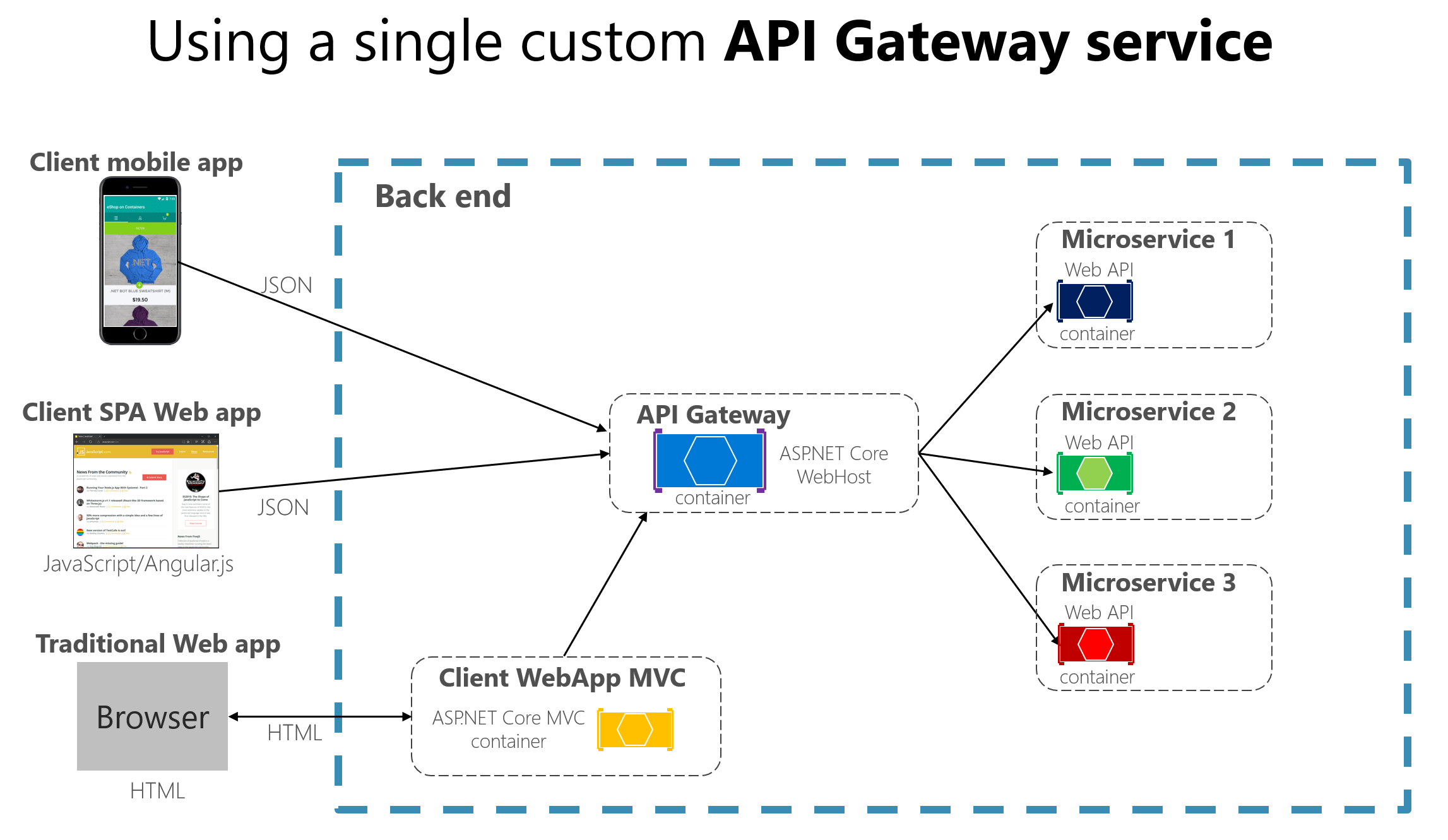API Gateway Pattern of Microservice Architecture
Introduction
In the world of microservices, managing and routing requests can become complicated. The API Gateway Pattern is a powerful solution that acts as a single entry point for managing requests to various microservices.
What is the API Gateway Pattern?
Definition
The API Gateway Pattern is a server that acts as an API front-end, receiving API requests, routing them to the appropriate microservice, and then aggregating the results.
 Image credits to microsoft
Image credits to microsoft
Key Functions
1. Routing
Routing directs incoming requests to the appropriate microservices.
Path-Based Routing
-
How It Works: Requests are routed based on the URL path.
-
Benefits: Enables organizing microservices by functional domains.
Version-Based Routing
-
How It Works: Different versions of a service can be maintained.
-
Benefits: Facilitates A/B testing and supports legacy systems.
2. Composition
Composition aggregates the responses from various microservices.
Response Aggregation
-
How It Works: Gathers and combines responses from multiple microservices.
-
Benefits: Simplifies the client’s job by returning a cohesive response.
3. Rate Limiting
Rate limiting controls the number of allowable requests.
Client-Specific Limiting
-
How It Works: Limits requests based on the client’s identity.
-
Benefits: Provides granular control and helps in fair usage.
4. Security
Security includes both authentication and authorization.
Authentication
-
How It Works: Validates the identity of a user or system.
-
Benefits: Ensures only legitimate users can access the services.
Authorization
-
How It Works: Determines what actions or resources the authenticated entity is allowed to access.
-
Benefits: Provides granular control over access to resources.
Why Use an API Gateway?
-
Simplifying Client Side: Clients interact with various microservices through the gateway, simplifying the client side by having a single entry point. This is especially beneficial when there are multiple, diverse clients like mobile, web, and third-party applications.
-
Centralized Management: The API Gateway Pattern centralizes the management of microservices, making it easier to provide functionalities like security, monitoring, and rate limiting.
-
Facilitating Third-Party Integration: By exposing a set of APIs through the gateway, integration with third-party applications and services becomes smoother and more manageable.
Conclusion
The API Gateway Pattern is a vital component in a microservices architecture. Through routing, composition, rate limiting, and security, it enables effective control, management, and protection of the underlying services.
